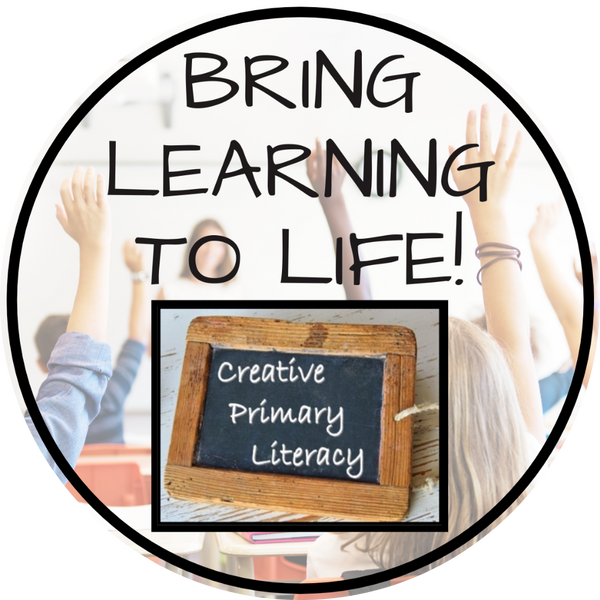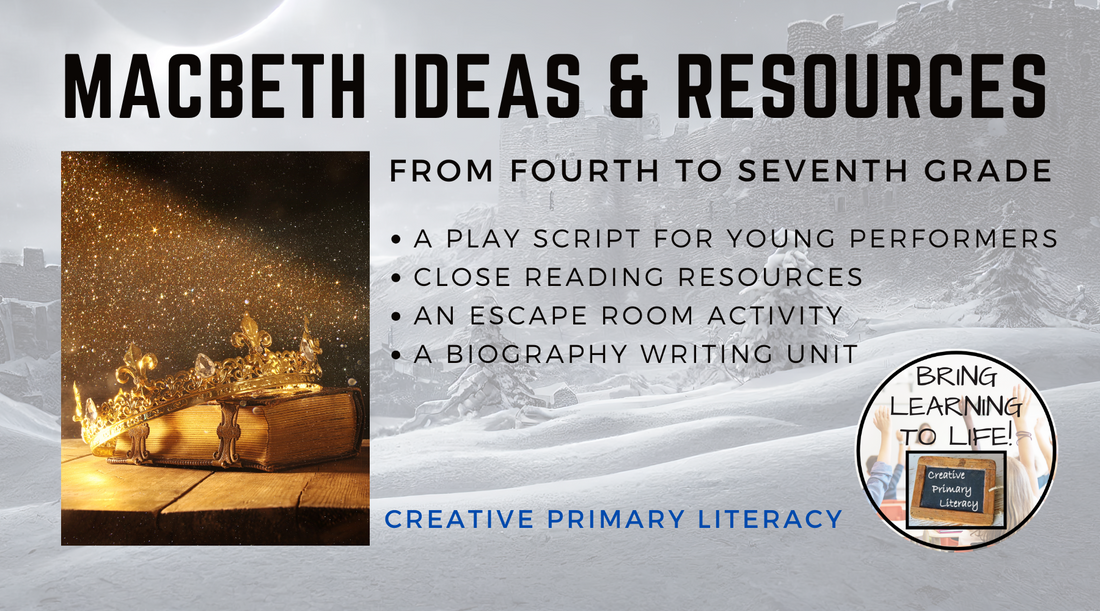Teaching William Shakespeare’s 'Macbeth' offers an unparalleled opportunity to dive into the rich world of drama, intrigue, and timeless themes that have captivated audiences for centuries. Whether your students are new to Shakespeare or already familiar with his works, approaching 'Macbeth' through a variety of engaging, hands-on activities will make the unit memorable and impactful.
Starting with Shakespeare: The Man Behind the Words
Before jumping into Macbeth, it's important to set the stage by introducing students to William Shakespeare himself. Learning about his life, the Elizabethan era, and his incredible contribution to literature provides crucial context for understanding his works.
Available resources for this portion of the unit include:
- William Shakespeare Close Reading Activities: Look into the life of William Shakespeare with a reading comprehension passage. Activities then include comprehension and grammar questions about the text, a multiple choice quiz, a crossword puzzle, a wordsearch activity, and a teacher presentation to introduce the famous figure.
- A William Shakespeare Biography Writing Unit: Dive deeper into Shakespeare’s fascinating life, from his upbringing in Stratford-upon-Avon to his rise as one of the most influential playwrights in history. This template allows students to work independently or in a team, sorting facts, writing paragraphs, and using templates to organise their work.
- A William Shakespeare Escape Room: Engage students with a fun and interactive activity to learn about Shakespeare’s world. Students will need to solve clues and puzzles related to his life and plays in order to complete the task.
These activities not only build background knowledge but also spark curiosity and excitement for what’s to come.
Why Macbeth Matters
Macbeth is one of Shakespeare’s most famous and accessible plays, tackling universal themes like ambition, power, guilt, and fate. It’s a masterclass in character development and storytelling, with memorable quotes like “Out, damned spot!” and “Is this a dagger which I see before me?” that linger in students' minds long after the unit ends.
Studying Macbeth also offers students a chance to explore moral dilemmas and psychological conflicts, which makes for great discussions and deeper thinking. Its supernatural elements, from the eerie witches to Banquo's ghost, keep students engaged while offering insights into Elizabethan beliefs about fate and the unknown.
Bringing Macbeth to Life: Performance as a Teaching Tool
The best way to teach Macbeth is not just to read it but to perform it. Shakespeare’s plays were written for the stage, and performing scenes helps students better understand the emotions, motivations, and relationships of the characters. It also builds confidence and fosters collaboration.
To make this easier for younger performers, we have a play script tailored specifically for students. This adaptation retains the heart of Shakespeare’s original work while simplifying complex language, making it perfect for classroom performances or dramatic readings.
Other Macbeth Specific Resources
After performing the play, delve deeper into its themes and language with our free Macbeth Close Reading Activities. Like the activities mentioned above, the resource comes with a comprehension passage about Macbeth, comprehension and grammar questions about the text, a multiple choice quiz, a crossword puzzle, a wordsearch activity, and a teacher presentation to introduce the famous play.
Why not compare and discuss other important William Shakespeare plays and decide for yourself which of his plays is his greatest? Use our Shakespeare's Greatest Play Opinion Writing Unit to research, discuss and write about his greatest plays.
Conclusion: Macbeth - A Unit to Inspire and Educate
By combining historical context, engaging activities, performance, and close reading, your Macbeth unit can offer students a rich and unforgettable learning experience. Starting with Shakespeare’s life and works lays a strong foundation, while performing Macbeth makes the play come alive. Finally, close reading activities ensure students leave the unit with a deep understanding of the play’s themes, language, and significance.
Whether it’s a biography unit, an escape room, a student-friendly play script, or analytical close reading passages, our resources are here to support you in making Shakespeare’s Macbeth a highlight of your curriculum.
Let’s inspire the next generation to appreciate the brilliance of Shakespeare!
Save your money and have access to a whole host of teaching resources about William Shakespeare and four individual play scripts written for young performers, with our William Shakespeare Mega Bundle of Play Scripts and Activities!
For 1000s more teaching resources, check out Creative Primary Literacy!





















